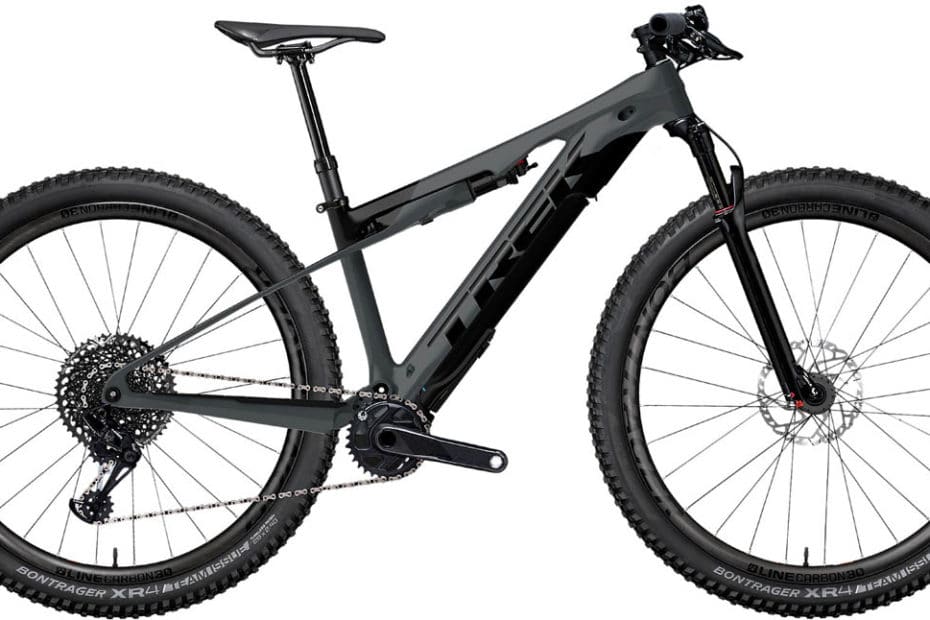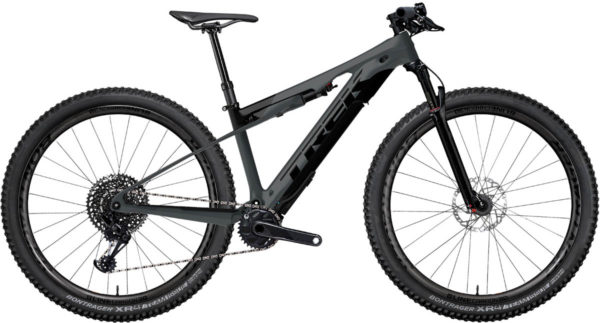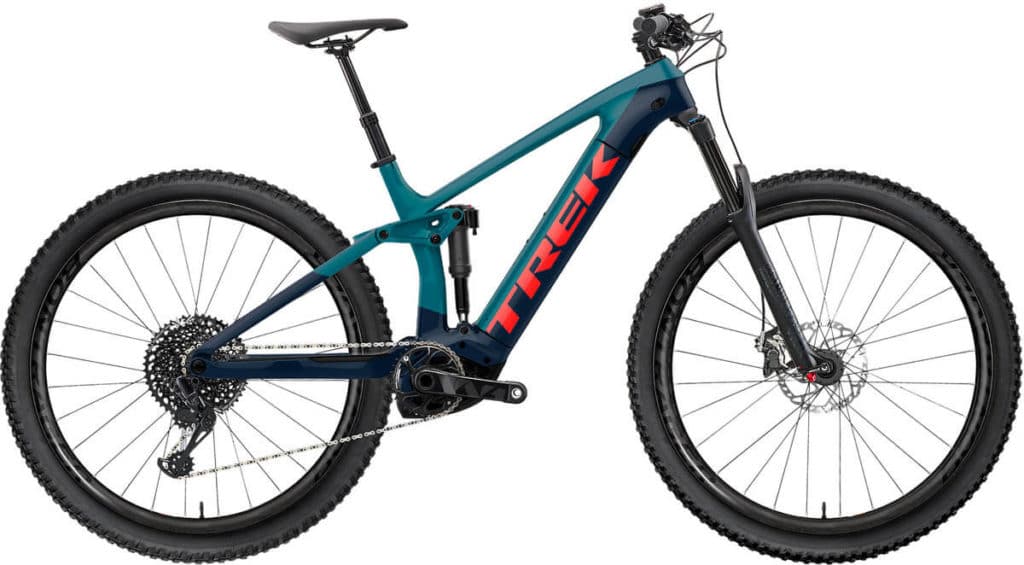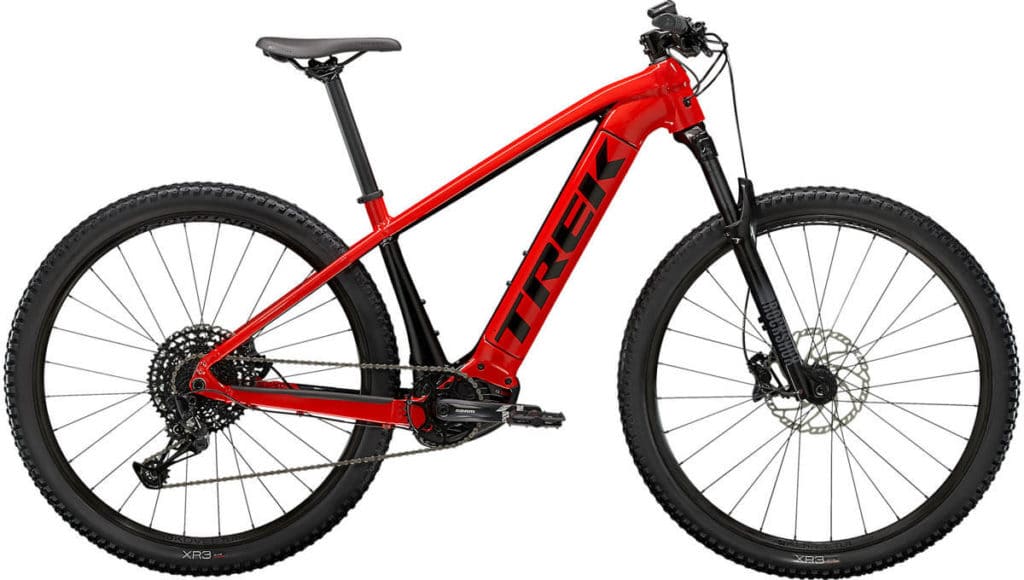Seldom an e-bike is defined by a single component. The Trek E-Caliber, however, is an exception in many respects. And when you say E-Caliber, you mean IsoStrut. A year ago, Trek introduced this unique system for damping the rear triangle on the Supercaliber, a fully without electric motor support. Now the US company from Waterloo, Wisconsin, is following suit with its counterpart for e-bikes.
So, what is IsoStrut? A damper, that’s for sure. However, it’s not just any damper. Normally, a damper is a rather complex construct. It consists of the actual damper, one or more room side levers and various pivot points. The whole thing is connected to the down tube. While riding, the system works in various directions – horizontally, laterally, vertically – and thus compensates for the unevenness of the terrain. This is comfortable, but not always very efficient in terms of propulsion.
Forward in every situation
IsoStrut does without levers. Instead, two wide, flat seat stays lead towards the top tube. They yield vertically, but not laterally. The shock is completely integrated into the frame and is enclosed by the two stays and the top tube. Trek thus cheats torsion. The rear triangle remains balanced at all times and cannot twist. This stiffness allows IsoStrut to transmit forces very directly. You should feel this especially on climbs and flat sections.
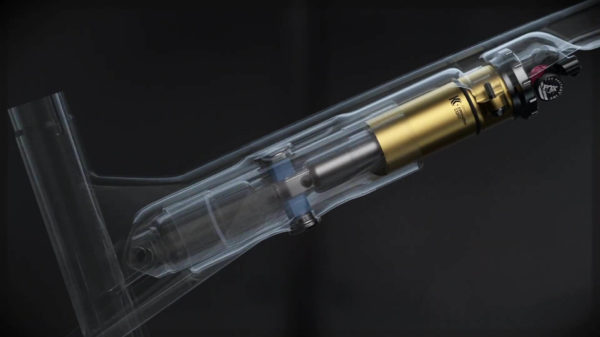
The damper inside the IsoStrut on the Trek E-Caliber is made by Fox.
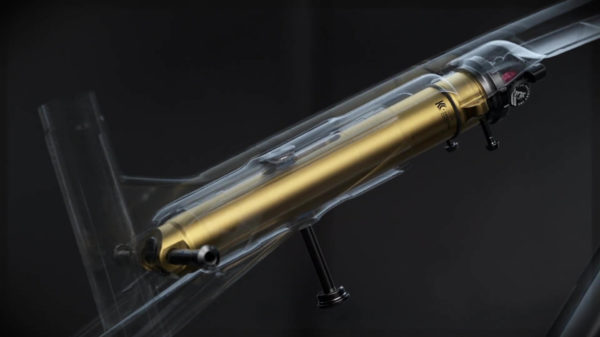
IsoStrut is locked in the frame with four screws.
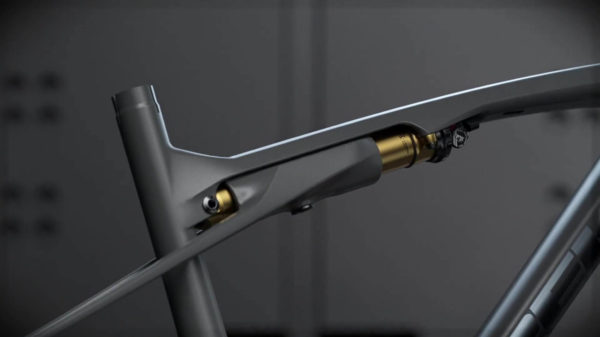
From the outside, the IsoStrut damper looks relatively plain.
In terms of comfort, the E-Caliber cannot compete with an e-fully that offers 120 millimetres of suspension travel or more. The 60 millimetres of the IsoStrut compensate significantly less shocks. Nevertheless, you can also lock out the travel completely if you wish. A classic shock pump is all you need to adjust it to your body weight. The rebound damping is adjusted via a dial.
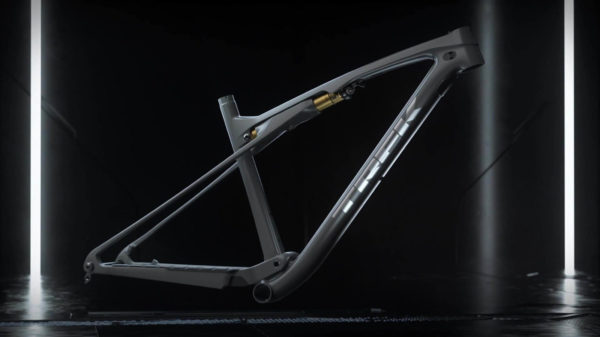
IsoStrut minimally bounced in
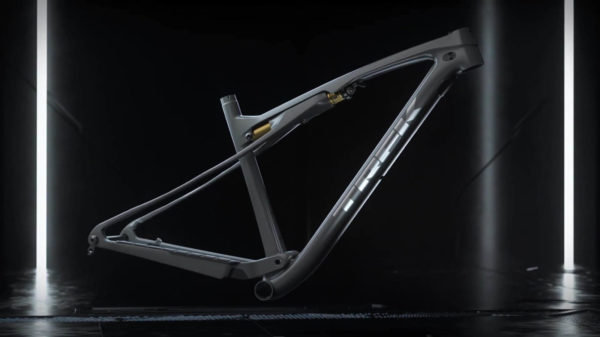
IsoStrut maximally bounced in
The epitome of the cross-country bike
Trek has deliberately chosen to reduce the suspension travel compared to other solutions. After all, the E-Caliber serves as a gap filler in the range. Gravity and enduro fans have so far gone for the Rail – a bike for the toughest off-road terrain. Those who want to gain their first experience riding over hill and dale tend to go for the Powerlfy. There was a yawning void in between.
This is now filled by a bike that strongly resembles a traditional cross-country mountain bike. Relatively light and with less suspension, it is aimed at sporty bikers who plan longer tours and avoid extreme terrain. The E-Caliber deliberately does not want to relieve you of every physical and technical challenge. Its configuration is designed in such a way that you can always determine the degree of exertion you want to experience while riding in fine increments.

The IsoStrut damper can be easily adjusted with a damper pump.
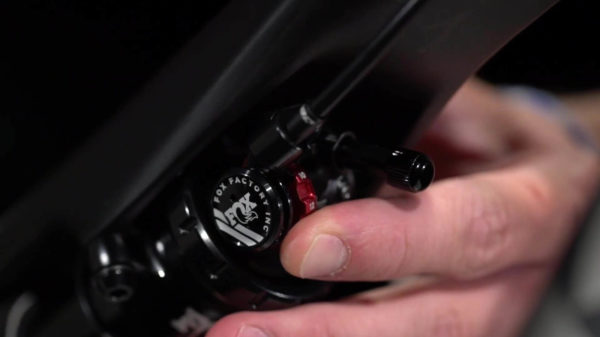
You can adjust the rebound damping on the IsoStrut via a dial.
Restraint as dogma
The current magic word in this context is “minimal assist bike”. The motorisation with the Fazua Evation drive fits perfectly with this approach. Both the maximum 250 watts of the motor and the 250 watt hours of battery power provide the desired boost depending on the situation. In terms of torque, the motor with its 55 Newton metres is far from the 85 Newton metres of other competitors. But as I said, that is part of the programme. At the same time, the low total weight of the system of 4.6 kilograms makes it easier to keep the weight of the entire bike in check. Not to mention the fact that the drive can be removed in no time at all and you can then ride an ordinary mountain bike.
It remains to be said that the frame of the E-Caliber is borrowed from the frame of the Supercaliber. For the e-bike, Trek has added 120 millimetres of travel to the fork. The E-Caliber also inherits the dropper seatpost and the 29 inch wheels from its twin without an electric motor. The 11 speed drivetrain is now almost obligatory. Shimano’s Deore groupset is used here. Hydraulic disc brakes with two brake pistons are also available. The front brake discs have a diameter of 203 millimetres. The rear discs are 180 millimetres.
Maximum individuality
To match the exclusivity of the bike, you can give it your very own touch with the Project One from Trek. The custom bike programme offers you the opportunity to design almost every detail according to your own wishes. It starts with the choice of paint. Gloss or matt. Colour for the frame. Colour for the logotype. You can even have a short slogan, your name or something similar applied to the frame. Moreover, a wide range of components such as wheels, rear derailleur, saddle, stem, etc. are at your disposal. The only downer is the counter for the price, which is displayed relatively small at the top left. Depending on your actions, it quickly jumps upwards.

Background: IsoStrut is not unique
The idea of a full-suspension bike with trimmed suspension travel is not new. Around the turn of the millennium there was even a special term for it, the “softtail”. And Trek was already involved at that time. Its STP model (Soft Tail Pro) had a corresponding air shock with a suspension travel of 1.5 inches, or about 38 millimetres. The Micro Travel Technology (MTT) from the Swiss bicycle manufacturer BMC is much more recent. Since 2016, it has been equipping cross-country bikes with an additional 15 millimetres of suspension travel. MTT was basically an extremely resilient rubber that was supposed to withstand fatigue while biking for a long time. Incidentally, Trek developed the current IsoStrut suspension system in close cooperation with Fox.
Curious about other Trek innovations for 2021? Just click here.
Pictures: Trek
